Traditionally, the manufacturing of piston accumulators has relied on forging and die casting processes. However, forward-thinking organizations, particularly those in offshore oil and gas, are increasingly acknowledging the distinct advantages offered by an alternative method: centrifugal casting.
In this article, we explore the importance of centrifugal casting for manufacturing accumulator components, unveiling a myriad of benefits and illuminating its practical applications in powering the machinery that drives modern industry forward.
Limitations of conventional manufacturing methods
Piston accumulators are critical components used across diverse sectors encompassing most industries. It’s a part that demands durability and resilience, especially in high-pressure environments subject to numerous pressure cycles.
The manufacturing integrity of the accumulator body is essential to maintaining pressure, preventing leaks, and ensuring the overall performance and safety of hydraulic systems.
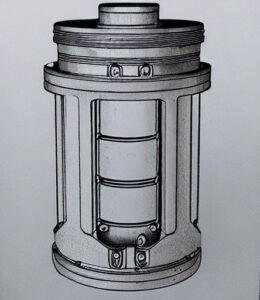
Traditionally, the two main methods used to produce piston accumulators are forging and die casting.
Die casting offers cost-effective production for high-volume runs and allows for the creation of intricate designs. However, its limitations include restricted material options, dimensional inaccuracies, potential porosity, and brittleness issues.
Forging provides excellent fatigue resistance and a wider choice of materials. However, it generates a lot of material wastage and may have longer lead times. It can also be a costly option due to higher equipment and tooling expenses.
Additionally, both methods may necessitate additional machining or finishing operations, adding to production time and cost.
An overlooked method that lifts accumulator performance
In contrast, there’s centrifugal casting—an often-overlooked method for manufacturing piston accumulators and one that is frequently misunderstood.
Nevertheless, it remains a highly efficient process, celebrated for its capacity to yield cylinder-shaped castings with unparalleled precision and outstanding material integrity, nearing final dimensions.
“Unlike other methods,” said Greg Whitman, Vice President of Sales and Engineering at Spuncast. “Centrifugal casting offers several advantages for the production of accumulators, including the ability to produce and customize tubes with excellent mechanical strength, using a wide variety of materials.”
Centrifugal casting differs from forging or die casting in that it produces metal cast parts without using sprues, risers, or other gating system elements, thereby enhancing its efficiency.
The following additional benefits underscore its suitability as the preferred option for manufacturing piston accumulators.
- Uniformity: Centrifugal casting ensures consistent wall thickness, crucial for uniform performance and pressure containment.
- Enhanced Integrity: By eliminating defects like porosity, centrifugal casting produces cylinders with higher structural integrity, vital for reliable hydraulic systems.
- Cost Efficiency: With fewer tooling costs, post-casting operations, and less waste, centrifugal casting offers cost savings in material and production time, making it economically advantageous.
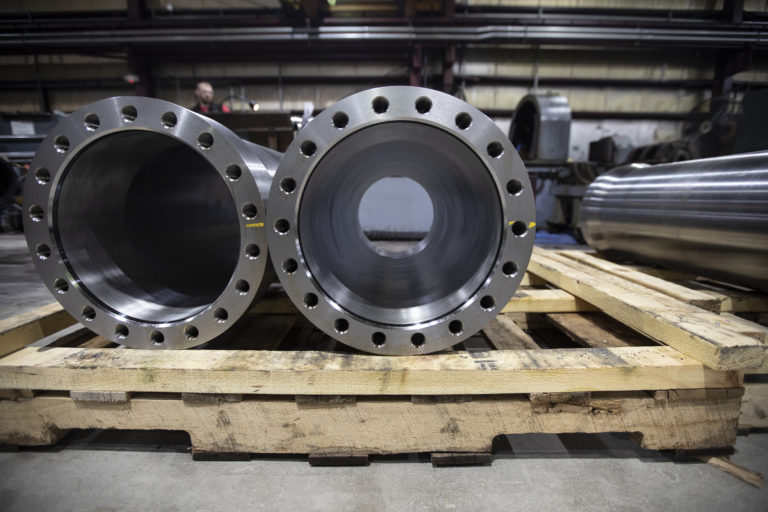
Understanding centrifugal casting
Centrifugal casting is a casting process that involves pouring molten metal into a rotating mold, resulting in the formation of cylindrical shapes with uniform density and excellent metallurgical properties.
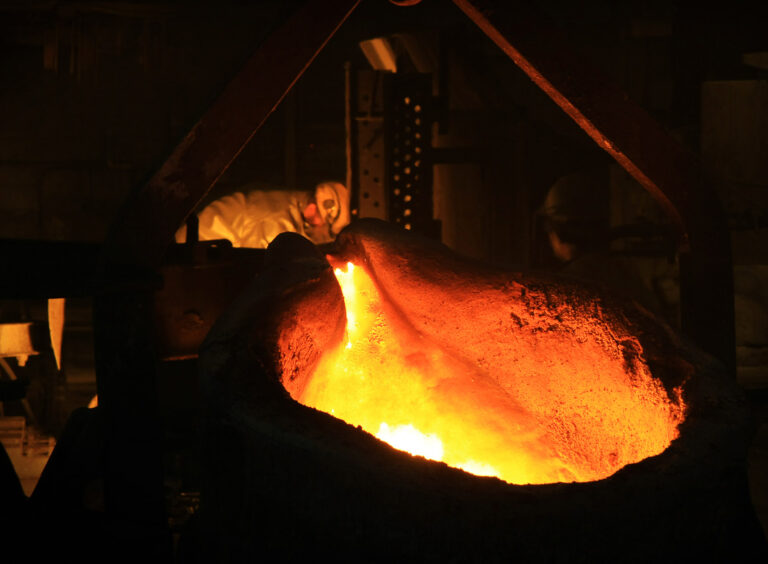
This method offers numerous advantages beyond structural integrity, particularly in terms of metallurgical quality, which includes:
- Rapid directional solidification from OD to ID ensures consistent grain structure for superior strength and toughness.
- Interior feeding of molten metal minimizes shrinkage porosity without risers or gating, enhancing overall quality.
- Centrifugal force directs lighter inclusions and gas porosity towards the interior bore, enhancing casting integrity.
The performance and longevity of centrifugal cast components, including accumulators, rely heavily on material properties. Centrifugal cast metals can be customized to address factors such as operating conditions, required performance characteristics, and cost considerations.
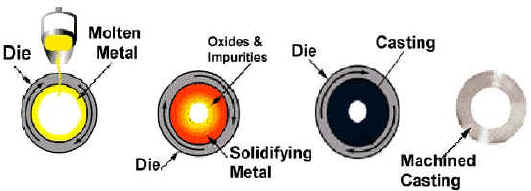
Why oil & gas companies prefer centrifugal cast accumulators

Centrifugally cast piston accumulators are favored in the oil and gas industries due to their numerous benefits, including cost-effectiveness and adherence to strict manufacturing standards for high quality and reliability.
The process allows precise control over the internal diameter (ID) of accumulator tubes, with a maximum variance of .003″ over a 20-foot tube.
Cast accumulators are crucial in blowout preventers for offshore operations, where space constraints and precise dimensional control are critical, offering cost-efficiency and customization to specific designs.
Reel Power uses CC accumulators to harness ocean pressure
Reel Power Marine & Energy, a Houston-based provider of offshore drilling solutions, uses centrifugally cast piston accumulators for their Depth Compensated Accumulators (DCBs).
These DCBs play a crucial role in supplying hydraulic fluids to wellhead blowout preventers and subsea control systems. By utilizing ocean water column pressure to enhance hydraulic pressure, they reduce the required accumulator bottles in subsea systems by over 90%.
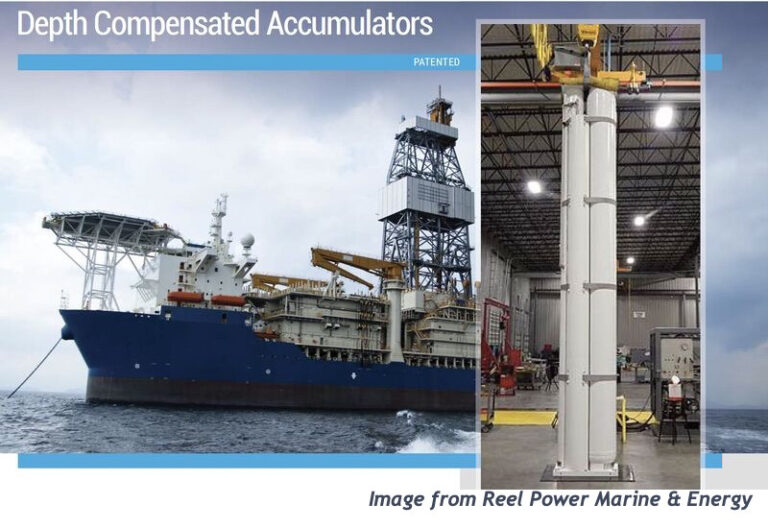
Centrifugal casting allows the accumulators to be customized for specific blowout preventer designs, enhances tubing durability, and ensures the optimal performance needed for offshore operations.
With over 500 global installations, Reel Power Marine & Energy’s DCBs are lauded for their reliability, efficiency, simplified maintenance, space, and weight savings, and performance in deep offshore drilling operations.
Piston accumulators that meet today’s applications
From oil rigs to more everyday uses like automotive, and construction, piston accumulators play a crucial role in ensuring the reliability, efficiency, and continuity of industrial operations.
By integrating centrifugal casting methodologies with resilient materials, manufacturers can furnish accumulators engineered to surpass the rigorous demands of modern industrial applications.
As the appetite for high-performance hydraulic systems grows, these advancements chart a course toward heightened efficiency, unwavering reliability, and extended lifespan within accumulator technology.

